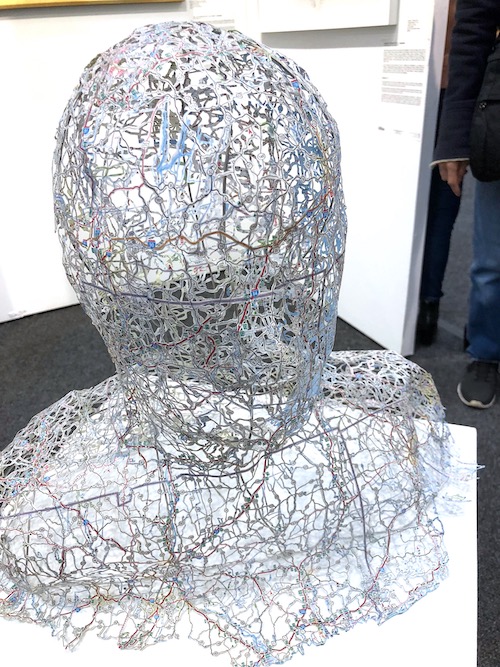What if you could sit down at your computer and create a new organism as easily as ordering a chess set on Amazon? While it may sound far fetched, the creation of computer generated artificial life is already being developed in labs by scientists around the world. Last year, Harvard geneticist George Church announced he is only a few years away from creating a hybrid woolly mammoth embryo. Once created, the embryo could be brought to life, creating the world’s first elephant-wooly mammoth hybrid with plans to eventually create and resurrect an animal extinct for over 3,000 years. Yet to call George Church a geneticist is an understatement. In fact, he is a synthetic biologist, or a DNA designer of the future. Synthetic Biology (or Synbio) isn’t something new, it’s been around for over half a century  (if you have time, read this excellent article on the subject “a brief history of synthetic biology” from collinslab at MIT).
(if you have time, read this excellent article on the subject “a brief history of synthetic biology” from collinslab at MIT).
Synbio is a multidisciplinary field combining elements of genetic engineering to assemble and artificially design biological systems and living organisms. While on the surface, synbio sounds just like any other scientific discipline, its powerful applications and potential impact on society should not be underestimated. To be optimistic, synbio has the potential to synthesize alterations in DNA which could potentially create human cells immune to cancer, HIV and the aging process. If we were to create immortality, replacing worn or damaged organs could also be lab created and replaced. And what about the environmental impact of an infinite population? No problem as synthetic biologists could engineer photosynthesizing human skin cells able to harvest solar energy thus eliminating the need for food. Water could be generated by water producing cells or cells with extremely low water requirements (think of a cactus). In short, we could be completely self-sufficient and immortal. Just think about how a human-plant hybrid would look – green skin and other colors dependent upon geographic location and available light. Some have even suggested programming shrubs to react to explosive materials, so if someone were to approach a public area, the shrubs would change color to warn of an impending threat. Or program the food we eat to detect potential health issues – your urine would change color to (say for example) blue and an app on your phone would analyze/scan it and send a report to your doctor. Such applications could enable early detection and prevention of diseases, perhaps even eliminating them completely. Conversely, synbio could be used for malicious purposes ranging anywhere from creating bacteria and viruses completely resistant to treatment to inserting malicious DNA code to destroy crops and potentially all life on earth. Such actions would ignite a biological world war where the synthetic biologists would be in a life to death competition to outrace each other. This is perhaps the most terrifying aspect of synbio but one which must be closely monitored and regulated to prevent such abuse. On the other hand, synbio could also be used for cosmetic purposes, such as creating eyebrows, curing baldness and reversing the signs of aging. The possibilities are literally endless because unlike in the past where existing DNA was modified, synthetic biologists actually create new DNA. By creating new DNA, a synthetic biologist can literally sit in front of a computer screen and engineer a living organism from scratch. They can select and modify existing code or create entirely an entirely new one, an organism unlike any ever seen before. Called “synthetic life” such organisms could be used to create vital minerals or remove pollutants from the environment. While some fear the creation of a new world resembling something out of Jurassic Park, it’s far more likely that synthetic biology will (at least initially) be used for profit over entertainment. Pharmaceutical companies will stand to lose substantial revenue if expensive drugs are replaced by synbio technology, so it stands to reason they will need to profit from synbio in order to survive. And that shouldn’t be hard, since synthetic biologists will strive to continually invent and develop new products. Advocates of synbio propose that such inventions could substantially improve our quality of life while benefiting the environment. Opponents warn of the risks, especially in the hands of unethical individuals or organizations. And beyond that, there is also the risk of synthetic life mutating into something malicious and uncontrollable. Hopefully, the synthetic biologists will program in a “shut off” gene but it could get deleted or lose its function. A rogue synthetic lifeform is a scary concept, as frightening as alien life invading earth, but far more probable than the latter. Whatever the ultimate outcome, synthetic biology is something everyone should begin paying close attention to. As for now, it’s only the beginning. In a hundred years from today, the earth could look like a very different planet, if we still have one.

For more on this topic, please visit the following links:
-
- The Next Version of Me : How to Live Forever https://www.wired.com/story/live-forever-synthetic-human-genome/
- Rewriting life: whats the future of synthetic biology: https://www.technologyreview.com/s/424338/whats-the-future-of-synthetic-biology/
- Wild synbio projects currently in progress- visit – 7 Synthetic Biology Projects Breathing Life into Science – Creators at https://creators.vice.com/en_au/article/9anmk7/bioart-synthetic-biology-projects
- Good article by Nature on the future applications of synbio https://www.nature.com/scitable/blog/conferencecast/synbio_future_synthetic_biology_for